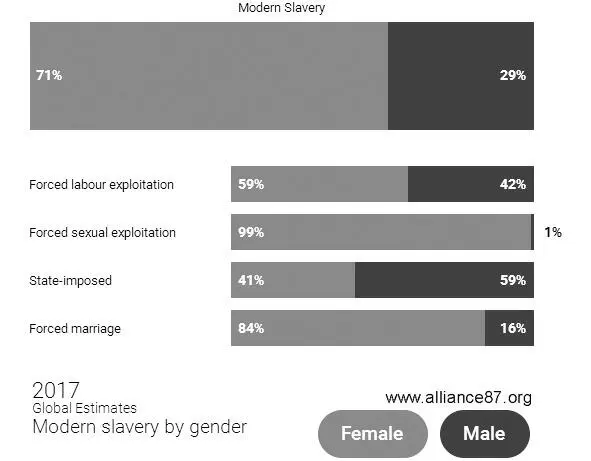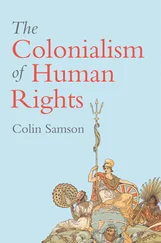Andrey Sokolov - Economics and human rights
Здесь есть возможность читать онлайн «Andrey Sokolov - Economics and human rights» — ознакомительный отрывок электронной книги совершенно бесплатно, а после прочтения отрывка купить полную версию. В некоторых случаях можно слушать аудио, скачать через торрент в формате fb2 и присутствует краткое содержание. ISBN: , Жанр: Юриспруденция, Публицистика, popular_business, Философия, на английском языке. Описание произведения, (предисловие) а так же отзывы посетителей доступны на портале библиотеки ЛибКат.
- Название:Economics and human rights
- Автор:
- Жанр:
- Год:неизвестен
- ISBN:9785449090874
- Рейтинг книги:5 / 5. Голосов: 1
-
Избранное:Добавить в избранное
- Отзывы:
-
Ваша оценка:
- 100
- 1
- 2
- 3
- 4
- 5
Economics and human rights: краткое содержание, описание и аннотация
Предлагаем к чтению аннотацию, описание, краткое содержание или предисловие (зависит от того, что написал сам автор книги «Economics and human rights»). Если вы не нашли необходимую информацию о книге — напишите в комментариях, мы постараемся отыскать её.
Economics and human rights — читать онлайн ознакомительный отрывок
Ниже представлен текст книги, разбитый по страницам. Система сохранения места последней прочитанной страницы, позволяет с удобством читать онлайн бесплатно книгу «Economics and human rights», без необходимости каждый раз заново искать на чём Вы остановились. Поставьте закладку, и сможете в любой момент перейти на страницу, на которой закончили чтение.
Интервал:
Закладка:
Spain
Prostitution in Spain is illegal. And this immediately leads to the growth of crime. So, according to Wikipedia, in 2007 in Spain, only officially found 1035 victims of sexual slavery.
However, it is useful for moralists to know certain facts. So in 1076, in some parts of Spain, the ban on prostitution was treated very ingeniously. A woman who was at night in the vicinity of a male bath could be raped with impunity. Such an unusual concern for morality. It was herded, probably also by select moralists…
Morality quite often took very bizarre outlines when it came to prostitution. So in 1325, King Jaime II founded the first red light district in Spain in Valencia and surrounded it with a high wall. The king ordered all women of easygoing demeanor to move into this quarter. It is important to note the word “move”. Those. despite the prohibitions, prostitution continued to exist.
Further medieval moralists did as follows…
Many municipalities began to ask the king to allow them to create the same neighborhoods in their cities. The permission was obtained and the “red lights” appeared in Tarragona in 1325, in Barcelona in 1330, in Castellón in 1401 and in Mallorca in 1411. Also brothels were opened in the kingdom of Valencia in the cities of Orihuela, Elche, Sagunto, Vila-reale, Alsir and Gandia. And before 1450, also in the cities of the kingdom of Aragon: Daroca, Huesca, Jaca, Barbastro, Sobreba, Cataluyde and Zaragoza.
In 1476, Queen Isabella, the wife of King Aragonese Ferdinand, ordered all prostitutes in Castile to pay tax. Probably, to maintain morale in society.
Catholic kings widely distributed licenses to open brothels to city municipalities, charitable organizations and their associates. As a result, brothels were opened in 1479 in cities such as Segovia, Cuenca, Toledo, Valladolid, Logroño, Madrid, Medina del Campo, Palencia, Ecija, Carmona, Sevilla, Cordoba, Granada, Jerez de la Frontera, Malaga, Salamanca, etc. As they say… all for the sake of morality…
Since then, prostitution in Spain has been banned, it has been allowed many more times.
Currently, brothels in Spain are banned, but there are quite a few “clubs” that do not hide much and function as semi-legal brothels.
On 25 January 2005, the Spanish National Court of Justice declared prostitution a legitimate economic activity in the lawsuit between the National Association of Entrepreneurs of Messalina and the Ministry of Labor and Social Affairs of Spain. A judge from Barcelona recognized the right of a prostitute to pay contributions to the system of state social insurance, because the woman is engaged in “labor for the benefit of society.” However, the courts referred to the European Court’s decision of 2001, in which prostitution is regarded as a “legal form of economic activity”.
Italy
In Italy, there are no brothels, they are prohibited by a special law from 1958. But in private, sex services are not prohibited. Punish only pimps and traffickers. Clients who did not pay prostitutes are treated as rapists. In 2010, in Italy, 70,000 prostitutes from 60 countries worked. In December 2002, the Italian authorities passed a law permitting prostitution in private homes. And street prostitutes face fine and arrest. (28)
In the Middle Ages in Italy, some cities tried to expel prostitutes (Bologna in 1259, Venice in 1266 and 1314, Modena in 1326), but unsuccessfully, for demand generates a proposal. Florence in 1287 ordered that within a radius of 0.5 km from the city there were no brothels, but already in 1325 again began to register urban prostitutes and the allocation for them of separate areas. In 1355 prostitutes were forbidden to appear in the city on all days, except Saturday and Monday. And according to the decree of 1384, prostitutes were ordered to wear bells on the head, gloves and shoes with high heels.
Since 1401, Naples began to impose prostitutes tax.
On April 30, 1403 in Florence, the Onesty police were created, which controlled prostitution, based on the writings of Augustine and Thomas Aquinas, who considered prostitution an indispensable institution for satisfying the sexual desires of men and an alternative to homosexuality. In the latter part, their views coincided with the position of Minister of the Interior of Nazi Germany Himmler, who was also a homophobe and saw in prostitution salvation from homosexuality.
Since 1823, the municipality of Palermo began issuing licenses to open brothels in the city. In 1841, at the request of the King of Naples, a compulsory medical examination for prostitutes was introduced. Likewise, Bologna also entered, having established even a special hospital for prostitutes.
The first law on prostitution in the united Italy was adopted on February 15, 1860. The number of registered prostitutes reached a peak in 1881 – 10,422 girls; in 1948 there were 4,000 of them, and in 1958, 2,560.
In 1923 Mussolini ordered all prostitutes to wear special passes, in which the results of their examination for venereal diseases were noted.
During the occupation of Ethiopia, special houses of tolerance for the needs of the army were created in Addis Ababa. Separate brothels were established for Italians, separate brothels for local residents.
Colombia
In Colombia, prostitution and brothels are legal. The activities of prostitutes are limited to “zones of tolerance” – districts specially designated for legal activities.
Latvia
Prostitution in Latvia has been legal since 1998. Prostitutes, under the law of 2017, must be at least 25 years old, have a health certificate (health card issued by a venereologist) and can provide sexual services only in their own or removable living quarters. A client who uses the services of a minor prostitute risks a fine of 350 to 700 euros (29, 30)
The number of prostitutes in 2005 was estimated at between 10 and 30 thousand. The legalization of prostitution in Latvia has led to a significant increase in the flow of tourists. And here it is important to understand that tourists at the same time use not only the services of girls, but also rent housing, pay for the hotel, for travel, for food. Those. the legalization of prostitution had a beneficial effect on the Latvian economy and the development of the tourism industry.
Netherlands
Prostitution in the Netherlands is legal, and near the red light district of Oude Kerk, in fact, in the center of Amsterdam, stands the statue Belle, on the pedestal of which it says: “Respect sex workers of the world.”
According to official figures, in 2000, between 20,000 and 25,000 prostitutes worked in the Netherlands. Including:
• 32% of Dutch citizens,
• 25% of visitors from Eastern Europe and the European Union,
• 22% of newcomers from Latin America,
• 21% of newcomers from Africa and Asia.
In the Netherlands every year, from 1,000 to 1,700 victims of sexual slavery are registered. In 2008, 763 women from Hungary were identified, 60% of whom were forcibly involved in prostitution. Is it the fault of the legalization of prostitution, is it the fault of legislators? Hardly. If prostitution were illegal, then the percentage of forced exploitation would be much higher. But of course there are questions to the work of the police.

Modern s
The argument that the legalization of prostitution leads to trafficking and forced exploitation does not stand up to criticism. First, these are shortcomings in police work, and secondly, there are many other ways of violent exploitation and modern slavery. For example, the creation of clandestine shops, where they are held in slavery and forced to slave labor not prostitutes, but seamstresses or people of other specialties. So the profession and legalization of prostitution is not to do with it.
Читать дальшеИнтервал:
Закладка:
Похожие книги на «Economics and human rights»
Представляем Вашему вниманию похожие книги на «Economics and human rights» списком для выбора. Мы отобрали схожую по названию и смыслу литературу в надежде предоставить читателям больше вариантов отыскать новые, интересные, ещё непрочитанные произведения.
Обсуждение, отзывы о книге «Economics and human rights» и просто собственные мнения читателей. Оставьте ваши комментарии, напишите, что Вы думаете о произведении, его смысле или главных героях. Укажите что конкретно понравилось, а что нет, и почему Вы так считаете.












